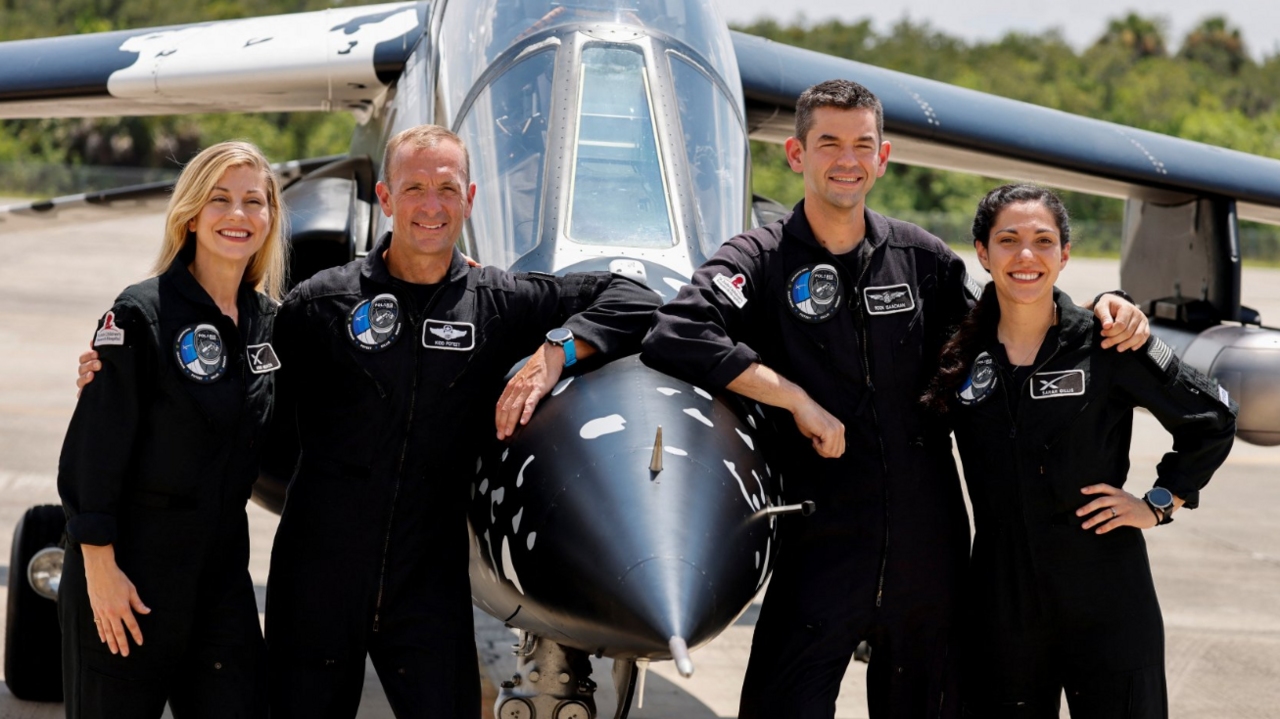SpaceX delays first private spacewalk mission

(L-R) The crew of Polaris Dawn includes Anna Menon, Scott Poteet, Jared Isaacman and Sarah Gillis
- Published
SpaceX has postponed its attempt to launch an expedition featuring an all-civilian crew that is aiming to carry out the first-ever spacewalk by private citizens.
The mission, known as Polaris Dawn, had been scheduled to take off from NasaÔÇÖs space centre in Florida early on Wednesday morning.
Hours before the launch, Elon Musk's company said it would be delayed ÔÇ£due to unfavourable weather forecastedÔÇØ in the capsuleÔÇÖs splashdown areas.
It is unclear when the next attempt will be. An earlier one on Tuesday was also cancelled due to a helium leak on the line connecting the tower to the rocket.
The rocket being prepared at Cape Caneveral on Monday
Fin-tech billionaire Jared Isaacman, who founded payment firm Shift 4, has been the driving force behind the private spaceflight.
He is aiming to become the first non-professional astronaut to complete a private spacewalk and has organised and funded much of the project with SpaceX. He has declined to disclose how much he has invested.
The Polaris project uses a SpaceX Dragon capsule attached to the company's Falcon 9 rocket to transport the crew.
They plan on reaching altitudes as high as 1,400km (870 miles), which if achieved would be the highest point reached by any crewed mission since NasaÔÇÖs Apollo programme more than 50 years ago.
The businessman is also captaining the crew, which consists of his close friend and retired US Air Force pilot Scott Poteet, and two SpaceX engineers Anna Menon and Sarah Gillis.
All four have spent two years training for the mission, dedicating thousands of hours to simulated drills.
Mr Isaacman has also gone to space before, reportedly paying $200m (£151m) to be on the first all-civilian orbital mission run by SpaceX in 2021, known as the Inspiration4 mission.
With the Polaris Dawn mission, they plan to spend six days in space. The spacewalk is planned to take place on day three.
Wearing Space XÔÇÖs upgraded spacesuits - equipped with displays and helmet cameras - Mr Isaacman and Ms Gillis will then exit the spacecraft. The whole event, taking place 700km in orbit, is planned to last about two hours.
They are also prepared to conduct several tests from the high altitude, including communication with Starlink internet satellites, and observations of the effects of passing through the Van Allen radiation belt, a highly charged area in space.
Related topics
- Published16 August
- Published8 August
- Published4 days ago